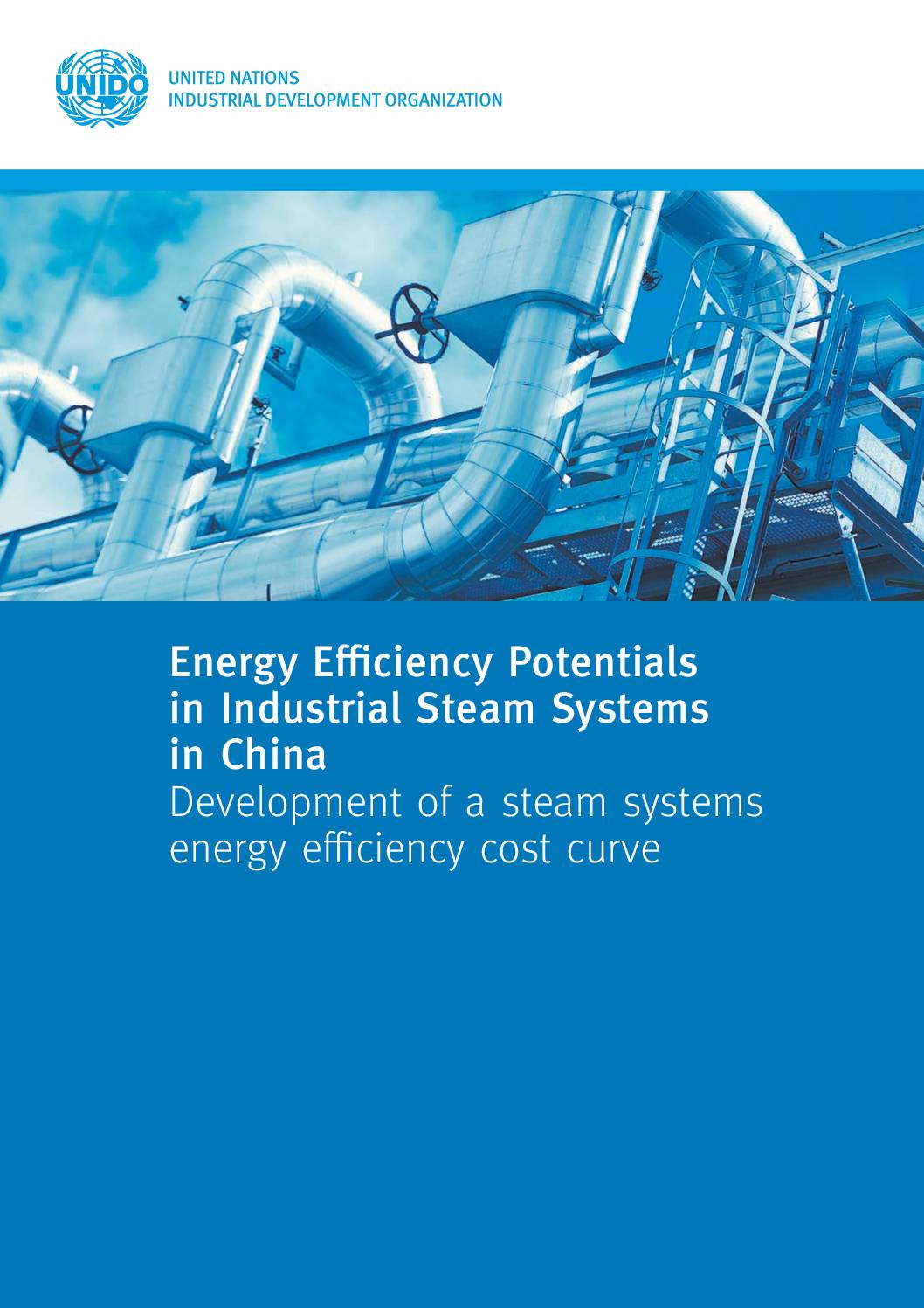China became the world’s largest emitter of energy-related CO2 in 2007 and the world’s largest energy consumer in 2009. China was responsible for nearly 21 per cent of global energy use and 26 per cent of energy-related CO2 emissions in 2011. The industrial sector dominates the country’s total energy consumption, accounting for about 70 per cent of primary energy use and 72 per cent of the country’s CO2 emissions in 2012. For these reasons, the development path of China’s industrial sector will greatly affect the future energy demand and dynamics of not only China, but the entire world. Steam is used extensively as a means of delivering energy to industrial processes. On average, industrial steam systems account for around 30 per cent of manufacturing industry energy use worldwide. There exists a significant potential for energy efficiency improvement in steam systems; however, this potential is largely unrealized. A major barrier to effective policymaking, and to more global acceptance of the energy efficiency potential of steam systems, is the lack of a transparent methodology for quantifying steam system energy efficiency potential based on sufficient data to document the magnitude and cost-effectiveness of these energy savings by country and by region. The goal of this study is to develop and apply a steam system energy efficiency cost curve modelling framework to quantify the energy saving potential and associated costs of implementation of an array of steam system optimization measures. The developed steam systems energy efficiency cost curve modelling framework will be used to evaluate the energy efficiency potential of coal-fired boiler and steam systems in China’s industrial sector. Nine energy efficiency technologies and measures for steam systems are analysed. This study found that total cost-effective (i.e. the cost of saving a unit of energy is lower than purchasing a unit of energy) and technically feasible fuel savings potential in industrial coal-fired steam systems in China in 2012 was 1,687 PJ and 2,047 PJ, respectively. These account for 23 per cent and 28 per cent of the total fuel used in industrial coal-fired steam systems in China in that year, respectively. The CO2 emission reduction potential associated with the cost-effective and total technical potential is equal to 165.82 MtCO2 and 201.23 MtCO2, respectively. By comparison, the calculated technical fuel saving potential for industrial coal-fired steam systems in China is approximately 9 per cent of the total coal plus coke used in Chinese manufacturing in 2012 and is greater than the total primary energy use of over 160 countries in the world in 2010. Several sensitivity analyses were conducted, their policy implications discussed, and uncertainties and limitations of this study are presented.
Download sourceShare this

Sectors: Cross cutting, Industry, Renewables
Country / Region: Asia, China
Tags: carbon dioxide, economic cost, emissions, energy, energy efficiency, international developmentKnowledge Object: Publication / Report
Published by: UNIDO
Publishing year: 2014
Author: UNIDO
